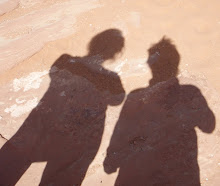As it turns out, there are enough interesting things to say about tertiary education in Australia, that we thought we’d write another blog about it. We recently learned that awhile back (perhaps in the 60s or so?), only the top 6 or 7% of students went on to university. Other people went to colleges, which sound to us like vocational schools or community colleges, but only the top students got university degrees. That then changed completely when the Whitlam Labor Government abolished university fees in 1973. So, suddenly, everyone could go to university, and the Government was going to pay for it. As you can imagine, this didn’t work out so well, since it didn’t take people too long to figure out that they could avoid getting a real job, and just continue on at university, getting 3 or 4 degrees. Their financial success in university was also due to the fact that the Government paid students an allowance (called the dole), and still does. Yep, that’s right. As long as your parents don’t make too much money, the Government pays you a weekly allowance while you’re in university. (If your parents do earn over the threshold, you can still get the allowance if you prove that you’re independent, which means that you’ll have to work an average of 30 hours per week for an 18 month period before you can get the allowance. Since many students take a Gap year, it would be easy to work that much for at least 12 months, but perhaps could get tricky if you wanted to start school, and still had to work 30 hours/week.)
Back to the period of free education, we heard some stories of people purposely failing exams so that they could remain students and keep receiving the dole while going to school for free. School is not free anymore (that ended pretty soon after in the 1980s), though prices are still much lower than in the US. And, it sounds like they’re planning to increase the dole as well in order to encourage more students to go to university. In fact, the recent Unilife Magazine here at the University of South Australia (UniSA) says that most students currently receive $377 every two weeks. If their rent is more than $250/week, then they can receive additional rent assistance of up to $113/week. Starting this year, there are also scholarships of $1300/year to help pay for books. This is expected to increase to over $2000 by 2012. Now, students can earn up to $236 every two weeks before their allowance is reduced. That will also increase to $400 in 2012.
These are my two favorite excerpts from the article about the allowance increase: “I think it’s ridiculous that they are trying to give us more. It’s money for nothing, all I have to do is study and then support the baby boomers when they retire,” and, “Nick admits the extra money would probably go into savings and not have a huge impact on his lifestyle.”
Maybe I’m just jealous, but I really can’t imagine receiving an allowance from the Government while I was at college. It would have been great indeed, but just seems like the most foreign and unimaginable concept ever. It’s a little hard to understand why students need the dole since many of them actually still live with their parents while they go to university. Also, if you need to borrow money to go to school, you don’t start paying it back until you graduate and get a job that pays you at least $30,000/year. Then, the money is automatically taken out of your pay check, sort of like taxes, to pay back your loan. I guess things are different than in the US because the percentage of students at university is much lower. Seems like Australia is experiencing the opposite problem, which is too few students getting higher degrees. In fact, Australia is heavily dependent on international students at universities (I’m pretty sure the Government doesn’t give them an allowance, and their tuition fees are much higher.) Interestingly, we learned that when the economy nose-dived in 2008, Australian universities were worried that international students wouldn’t be able to afford tuition any more, and that their numbers would decrease. Instead, what happened is that they could no longer afford US institutions, and numbers at Australian institutions actually increased.
The last little tidbit about education here is that to get into school, the only thing that matters is how you score on the national tests (I’m guessing it must be something akin to the SAT or ACT in the US.) Students do not have to submit the same kind of applications that we do in the US, where it’s essentially a resume of your academic, athletic and extra-curricular activities, along with recommendations, transcripts, etc. Here, the school and subject you study is based on how well you do on the exam, and also how many other people want to do the same subject as you. So, if you were really bright, but wanted to do a relatively unpopular subject, you would perhaps not be with many other bright, engaged students, as it would be relatively easy to do that subject. Definitely an interesting thing to think about whether or not it’s a good idea to have students competing so hard to get into the best schools…
Well, that’s perhaps most of the interesting things we’ve learned about higher education here in Australia. Hopefully you’ve enjoyed learning about it as much as we have!
Friday, 11 June 2010
Subscribe to:
Post Comments (Atom)

No comments:
Post a Comment